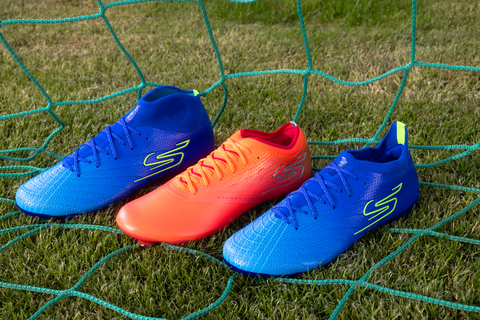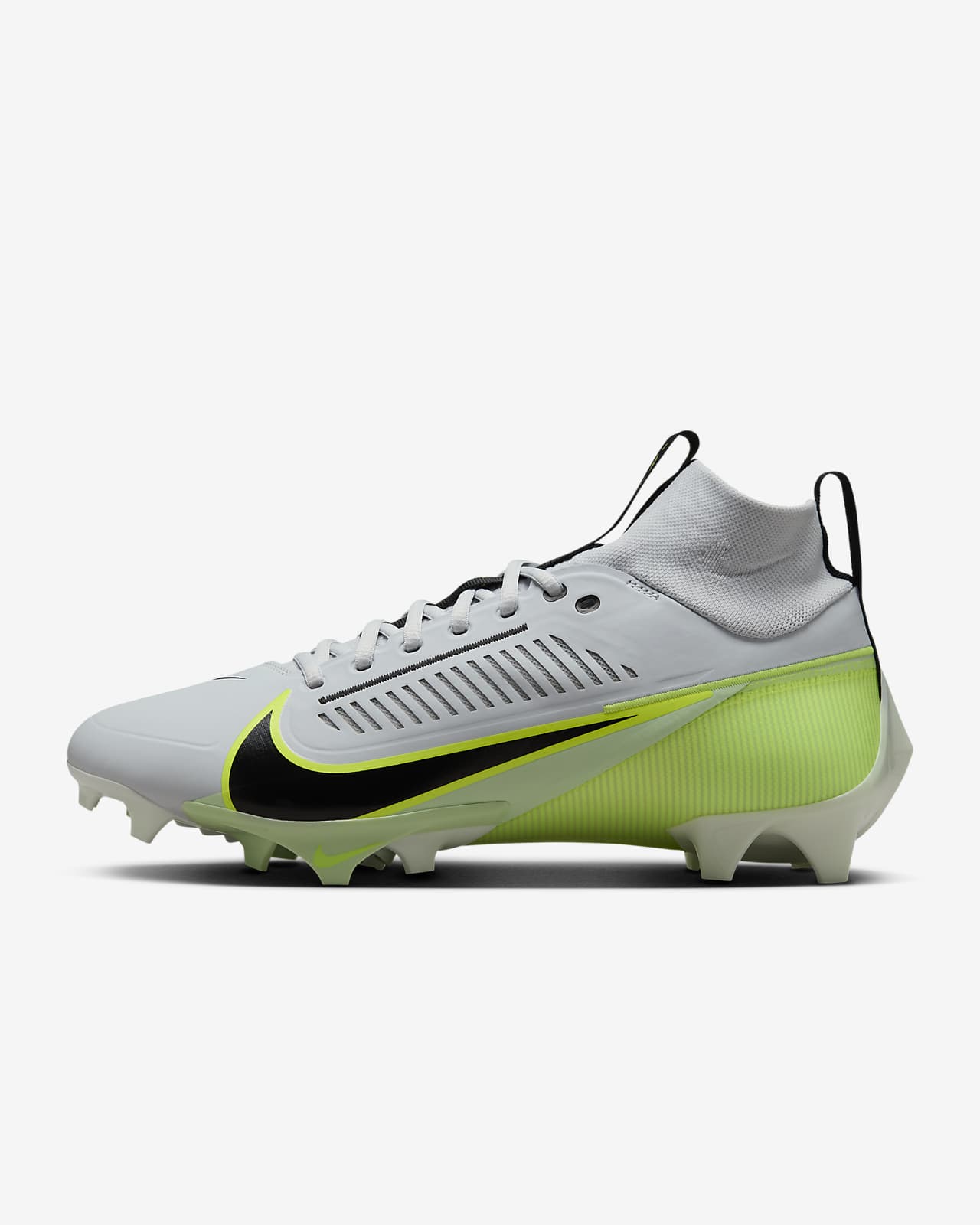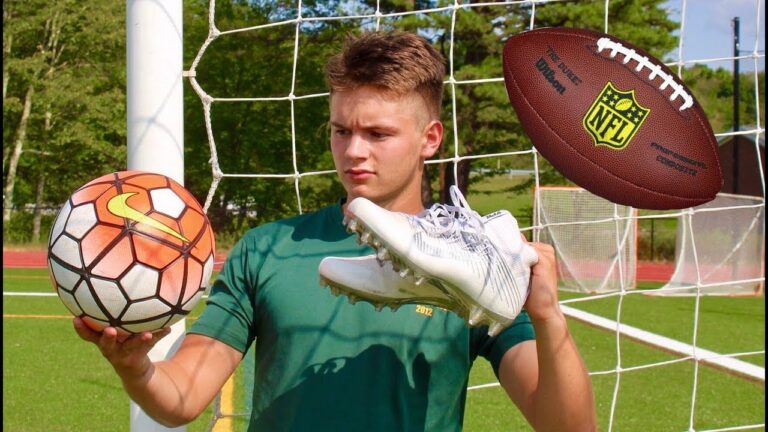Have you ever pondered the possibility of using football cleats for a game of soccer? This debate over whether you can wear football cleats for soccer has sparked curiosity among players and enthusiasts alike. As pivotal gear for both sports, the choice between football and soccer cleats isn’t always clear-cut. In this blog, we delve into the nuances of each type of cleat, scrutinizing their design and functionality to determine if swapping them is a game-changer or a misstep. Whether you’re a dedicated footballer curious about soccer cleats or a soccer aficionado considering football cleats, joining us on this exploration will unveil the essential truth behind this sporting conundrum.
Understanding the Difference Between Football Cleats and Soccer Cleats

When it comes to the debate of can you wear football cleats for soccer, understanding the variances between football cleats and soccer cleats is crucial. While both serve the purpose of providing traction on the field, they have distinct characteristics tailored for their respective sports.
Structure and Design
Football cleats typically have a heavier build with studs that are longer and more spread out to offer stability and grip on grass or turf surfaces that can be slippery. Soccer cleats, on the other hand, are lighter in weight, more maneuverable, and usually come with shorter studs that facilitate quick changes in direction on the field.
Material and Construction
Soccer cleats are designed to be more streamlined and low-profile to enhance ball control and feel. They are often made with thinner materials to allow for a closer touch on the ball. Football cleats, in contrast, are built for impact protection and durability, featuring reinforced toe boxes and sturdy construction to withstand the physicality of football.
Pros and Cons of Wearing Football Cleats for Soccer
When considering whether to wear football cleats for soccer, it’s essential to weigh the pros and cons to make an informed decision.
Pros of Wearing Football Cleats for Soccer
Football cleats offer excellent traction on the field, providing players with stability and grip during quick movements such as pivots and turns. The studs on football cleats are usually longer and more widely spaced compared to soccer cleats, which can be advantageous in wet or muddy conditions.
Cons of Wearing Football Cleats for Soccer
However, wearing football cleats for soccer may have some drawbacks. The longer studs on football cleats can increase the risk of injuries such as ankle sprains on firmer surfaces like artificial turf. Moreover, football cleats are designed for a different sport, so they may not offer the same level of ball control and touch as soccer-specific cleats.
Impact on Performance and Safety
When it comes to the question, “Can you wear football cleats for soccer,” the impact on performance and safety cannot be overlooked. Football cleats are designed with longer studs to provide traction on grass fields, which can significantly affect gameplay in soccer.
Performance Differences
Using football cleats for soccer may lead to reduced agility and maneuverability due to the longer studs. Soccer requires quick changes in direction, sharp turns, and precise ball control, which may be compromised by the design of football cleats.
Moreover, football cleats are heavier compared to soccer cleats, which can impact a player’s speed and overall performance on the field, especially during sprints or when attempting to accelerate.
Safety Concerns
Safety is a crucial aspect that should not be overlooked. Football cleats’ design, with its longer studs, can increase the risk of injuries in soccer. The longer studs can lead to more significant traction, resulting in potential knee or ankle injuries, especially during sudden stops or quick direction changes on the soccer field.
Proper footwear designed specifically for soccer is essential to ensure optimal performance and reduce the risk of injuries during gameplay.

Expert Opinions on Using Football Cleats in Soccer
When it comes to the debate on whether football cleats can be used for soccer, opinions among experts are divided. Some argue that football cleats, designed for the specific requirements of football, may not provide the ideal traction, comfort, and maneuverability needed for soccer. On the other hand, some experts believe that high-end football cleats can indeed be suitable for soccer, especially for players who prefer a slightly heavier and sturdier feel on the field.
Performance and Adaptability
Experts suggest that while football cleats are primarily designed for football, the differences in playing styles between football and soccer can impact the performance and adaptability of the cleats. The studs on football cleats are typically longer and fewer in number than those on soccer cleats, which may affect traction and stability on the pitch for soccer players.
However, some players find that the rigid soleplate of football cleats provides a more stable base for powerful shots and passes in soccer, especially for players who rely on strength and accuracy in their gameplay. This unique design characteristic can offer an advantage in certain situations on the soccer field.
Comfort and Durability
Comfort is a crucial factor in any sport, and experts highlight that while football cleats may offer excellent ankle support and protection, the fit and feel of the cleats can differ based on individual preferences. Soccer players who prioritize agility and quick movements might find that football cleats hinder their playing style due to the heavier construction.
Moreover, durability is a key consideration for athletes, and some experts caution that using football cleats for soccer may lead to faster wear and tear, reducing the longevity of the cleats in comparison to soccer-specific footwear. It is essential for players to assess their playing style and needs before deciding on the type of cleats to use.
Alternatives to Consider for Soccer
When considering alternatives to wearing football cleats for soccer, there are several options that players can explore for optimal performance on the field.
1. Soccer Cleats
Opting for specialized soccer cleats specifically designed for the game can provide players with the necessary traction and support needed on the field. Soccer cleats are crafted to enhance agility, speed, and ball control, making them the ideal choice for soccer players of all levels.
2. Turf Shoes
For games played on artificial turf surfaces, turf shoes are a great alternative to traditional cleats. These shoes feature a rubber outsole with smaller, nub-like studs that provide excellent grip on turf and prevent slipping. Turf shoes are lightweight and designed to withstand the demands of playing on artificial surfaces.
3. Indoor Soccer Shoes
Indoor soccer shoes, also known as futsal shoes, are designed for playing on indoor courts or hard surfaces. These shoes typically have a flat rubber sole that offers superior traction on smooth indoor surfaces. Indoor soccer shoes are perfect for training sessions or playing indoor matches.

Frequently Asked Questions
-
- Can football cleats be used for soccer?
- While it is technically possible to wear football cleats for soccer, it is not recommended. Football cleats are designed differently from soccer cleats, and they may not provide the necessary traction and grip needed for playing soccer effectively.
-
- What are the differences between football cleats and soccer cleats?
- Football cleats typically have a larger number of studs for better traction on grass, while soccer cleats have fewer and shorter studs for quick movements and ball control. Additionally, soccer cleats are designed to be lighter and offer more agility on the field compared to football cleats.
-
- Can wearing football cleats for soccer affect performance?
- Yes, wearing football cleats for soccer can affect your performance on the field. The lack of proper grip and traction may lead to slips, slides, and difficulty in making quick turns and movements, which are crucial aspects of playing soccer effectively.
-
- Are there any safety concerns when using football cleats for soccer?
- Using football cleats for soccer can pose safety concerns such as increased risk of injuries due to inadequate grip and stability. It is always recommended to wear the appropriate footwear designed specifically for the sport you are playing to reduce the risk of injuries.
-
- What should I consider when choosing cleats for soccer?
- When choosing cleats for soccer, consider factors such as the playing surface (natural or artificial turf), your position on the field (speed, control, power), and the fit and comfort of the cleats. It is advisable to invest in soccer-specific cleats that cater to the unique demands of the sport.
Final Thoughts: The Verdict on Football Cleats for Soccer
In conclusion, the age-old debate on whether you can wear football cleats for soccer has been unraveled. While football cleats may seem similar to soccer cleats, they are designed for different purposes. Soccer cleats prioritize agility, quick movements, and ball control, whereas football cleats focus on stability, traction, and support for lateral movements.
Players looking for optimal performance in soccer should stick to using soccer-specific cleats to enhance their game. By choosing the right footwear tailored to the sport’s unique demands, players can minimize the risk of injuries and maximize their potential on the pitch. So, when it comes to soccer, lace up your soccer cleats and step onto the field with confidence!





